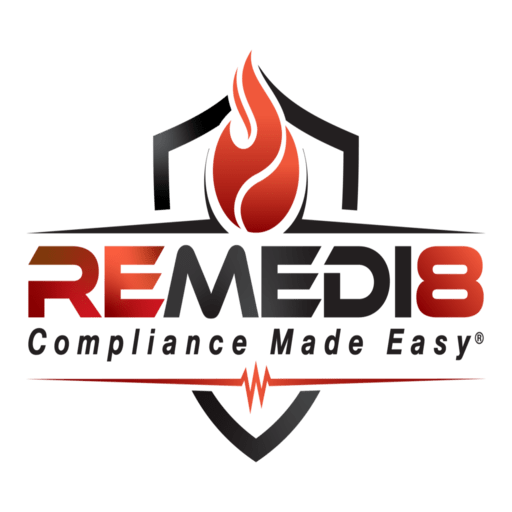Over the last 20 years, REMEDI8 subsidiaries have inspected and repaired hundreds of thousands of fire doors. During a fire door inspection, we log every door and over time we have noticed a pattern across our fire door inspection reports. On average, 75% of fire doors fail inspection. The fire door technicians find that the majority of these failures fall into three categories:
- Clearance – Door hinges are a common piece of a fire door assembly that can wear over time. Heavy wear can often be seen in a fire door that seems to “sag”. These sagging doors have increased clearance between the door and frame which will result in inspection failure. General use, as well as impacts from carts, patient beds, and other equipment, can cause misalignment as well which will result in a clearance problem that will cause a fire door to fail inspection.
- Smoke Seal – The smoke seal is required in most fire door openings to prevent and restrict the passage of smoke as well as draft control. With openings in high traffic areas, doors will see a greater number of failures due to damage to the smoke seal such as rips or tears. Improper installation of the smoke seal is often seen as well and will cause a door to fail inspection. This typically includes shortening of the smoke seal, a smoke seal that has been installed in the wrong direction, or a smoke seal that has been covered in paint from either the doors or frames being repainted.
- Holes & breaks – Fire doors in high traffic areas often see increased damage due to carts, patient beds, and other equipment. Wood doors tend to see more damage than metal doors, however, metal doors can still be dented or bent in ways that interfere with full closure, that will not latch properly, will not have a proper seal, or as we already discussed will have clearance issues. Failures involving breaks, cracks, dents, and bends are likely prone to a door replacement.
It is always good practice to Inspect fire door assemblies after installation and maintenance work. Annual inspections with certified reporting will help to ensure that the door, frame, hardware, and glazing are installed properly and will continue to function as intended if a fire occurs. Keep in mind that documentation of the door inspection, repairs, and testing activities is required at least annually for compliance with The Joint Commission (TJC) (EC.02.03.05 EP 25), NFPA 80, and/or your local AHJ.
REMEDI8 certified door technicians will conduct the multi-point inspection of all door assemblies as prescribed by the fire code, produce a detailed report of the current condition, and submit a formal recommendation for necessary repairs. Our team can immediately remedy any failures, re-test, and provide the required documentation to keep the facility up to code. Let REMEDI8 experienced Door Technicians take fire door compliance off your plate. Schedule your annual door inspection today!



